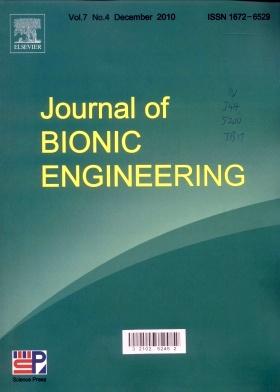Mole-inspired Forepaw Design and Optimization Based on Resistive Force Theory
Abstract
Moles exhibit highly effective capabilities due to their unique body structures and digging techniques, making them ideal models for biomimetic research. However, a major challenge for mole-inspired robots lies in overcoming resistance in granular media when burrowing with forelimbs. In the absence of effective forepaw design strategies, most robotic designs rely on increased power to enhance performance. To address this issue, this paper employs Resistive Force Theory to optimize mole-inspired forepaws, aiming to enhance burrowing efficiency. By analyzing the relationship between geometric parameters and burrowing forces, we propose several forepaw design variations. Through granular resistance assessments, an effective forepaw configuration is identified and further refined using parameters such as longitudinal and transverse curvature. Subsequently, the Particle Swarm Optimization algorithm is applied to determine the optimal forepaw design. In force-loading tests, the optimized forepaw demonstrated a 79.44% reduction in granular lift force and a 22.55% increase in propulsive force compared with the control group. In robotic burrowing experiments, the optimized forepaw achieved the longest burrow displacement (179.528 mm) and the lowest burrowing lift force (0.9355 mm/s), verifying its effectiveness in reducing the lift force and enhancing the propulsive force.

 求助内容:
求助内容: 应助结果提醒方式:
应助结果提醒方式:


